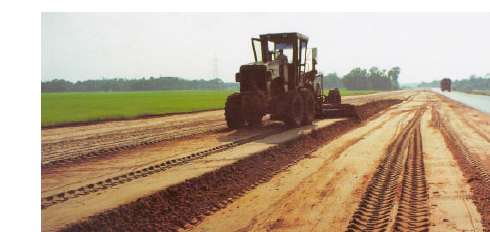Public investment in infrastructure is often recommended as a means of promoting economic activity. Identifying the impact of infrastructure investment on economic activity is, however, very complicated. The placement of new infrastructure may itself be endogenous, which makes it difficult to clearly quantify causal effects. Areas with better roads may grow faster, but it is equally possible that the economic potential of the region dictated where roads were placed. It is also possible that roads are placed into struggling regions as an effort to prop up the local economy. Thus, simple correlations between road quality and growth may overstate or understate the impact of roads on growth. One way to tackle the endogeneity problem is to study highways built to link two centres of economic activity. It can be argued that since such a highway is constructed to connect two centres, its route through intermediate areas is not a consequence of any economic or other characteristics they might happen to possess, but merely their location. In this way large scale highway construction offers a true random experiment for evaluating the impact of infrastructure on economic activity.
This project evaluates the impact of highway construction in India on several aspects of economic activity. The authors focus on India because it has emerged as one of the fastest growing nations in the world. The level of infrastructural development in India is now thought to be constraining its growth and so policymakers have planned for very large investments in infrastructure, even though there is no systematic evidence that quantifies the impact of public infrastructure on economic activity. Our data come from establishment-level surveys of manufacturing enterprises in both the formal and the informal sector for the fiscal years 1994-5, 2000-1, 2005-6 and 2010-11. In order to identify the impact of infrastructure on economic activity, we adopt the strategy outlined above by looking at the National Highways Development Project (NHDP), the largest highway project ever undertaken by India. This comprises the construction of the Golden Quadrilateral (GQ), North-South (NS) and East-West (EW) Corridors and Port Connectivity that connect major financial cities in India and/or join the critical corners of the countries. Since districts (except those in the nodal cities) were placed on the highway route because of their location rather than their economic characteristics, the effect of highway program is arguably exogenous. Two alternative measures of “treatment variables” can be designed to capture the degree to which a given plant in an industry would be affected by the highway program. The first is a binary variable for being within a given distance from a highway. The second is a continuous treatment variable of the distance of the district from the nearest highway. By matching a district’s distance from the highways to panel data on a sample of establishments from the formal and informal sectors, we can estimate the impact of improved highways on firm productivity, allocative efficiency and entrepreneurship rates (defined below) in the formal and informal sectors.
Measuring the impact on firm productivity is relatively straightforward, but we also try to measure the impact on allocative efficiency. Building a new highway may, for example, give firms access to new and more efficient suppliers, or it may allow firms to hold smaller inventories. We measure these effects through the variance in revenue productivity (the product of physical productivity and a firm’s output price) across firms. Larger dispersion for a given industry-year indicates greater inefficiency in resource allocation. The traditional approach to analysing the returns to public investment only considers existing businesses. Better infrastructure can also be critical for the entry of new firms. Firms rely on public infrastructure for transporting their inputs and outputs from and to markets, and for allowing their labour force to travel to work. This project therefore examines the impact of public infrastructure on the entry of new firms into the manufacturing sector.






